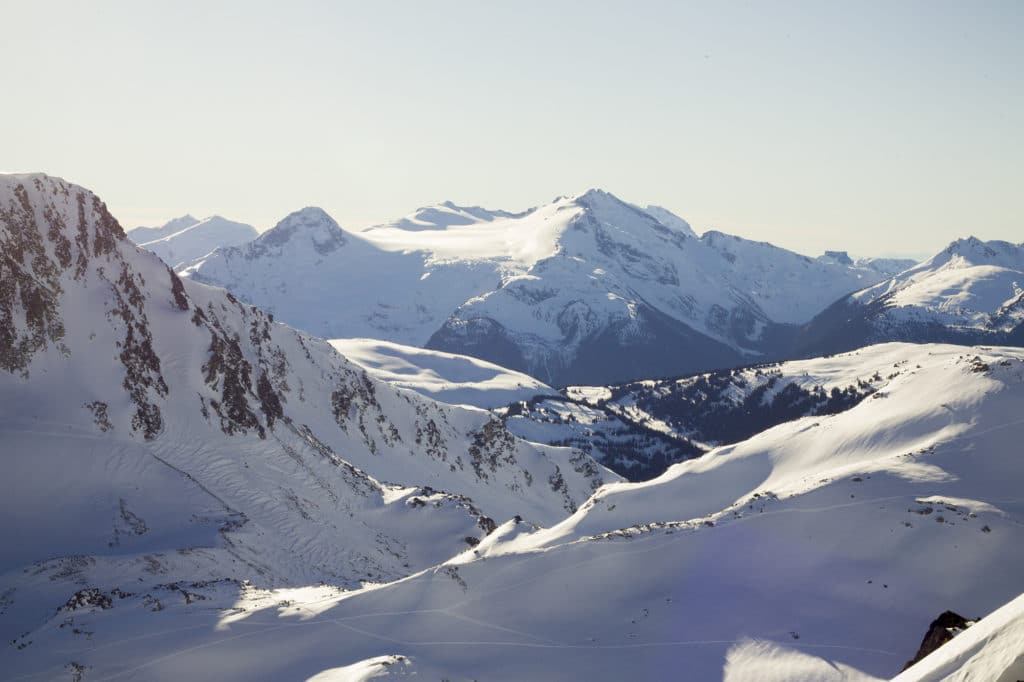Getting out for your last mountain bike fix or trail running up the Chief? The sun might still be shinning, but not for long, the snow Gods will start to sing and your waiting game will soon be over. Get ready and stock up on your backcountry essentials. Whether or not you are a seasoned backcountry user or a newb getting into the sport this resource written by ACMG ski guide, ski patrol, and really rad human Holly Walker will not only tell you what to bring but why.
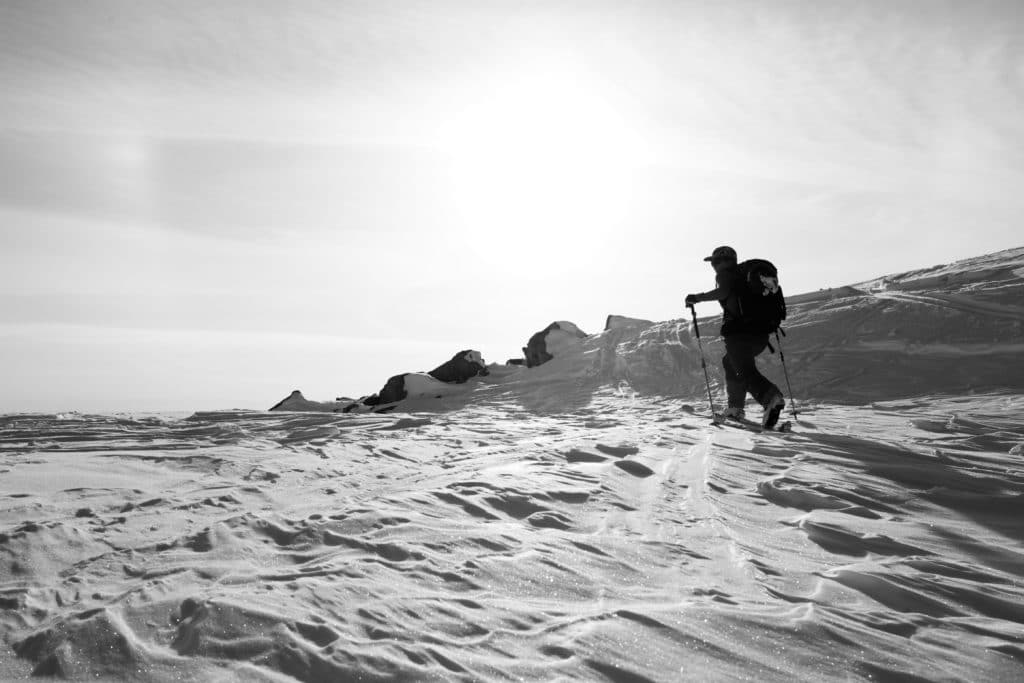
Holly Walker leading the way in the Whistler Blackcomb backcountry. Photo by Abby Cooper
Alpine Touring Equipment
Whether you ski or splitboard, here are two options worth trying out: Demo a pair of DPS Alchemist Wailer in 112 from Escape Route Demo Centre in Whistler – they are light, easy to turn and have a killer rocker to help you break the trail for your friends to follow up the mountain. Also available is the Spline’s Killer Splitboard. An all-around snowboard to slash deep pow in the backcountry and shred the cat track at the end of the day to get you to the all mighty après.
After a long wait, Salomon finally released their award winning the S/Lab Shift binding. I will have my chance this early winter to test the blend of touring efficiency of the pins on the uphill and see if it lives up to the performance of an alpine freeride bindings on the downhill (DIN 13). Après Lager ambassador and Solomon team skier Stan Rey has been raving about them already so the hype is building! Don’t forget to check out the range from Foon Skis as well.
A bit wider than my super narrow feet can handle, is the Hoji Pro Tour boot. I have been dying to try these models. Winner of the ISPO Award GOLD Winner in the Freeride/Touring Ski Boots category, these puppies have a progressive forward flex of 120 with a 55 degrees cuff rotation. The Hoji lock system is a simple flip of a switch on the heel of the boot to change walk-mode into downhill descent.
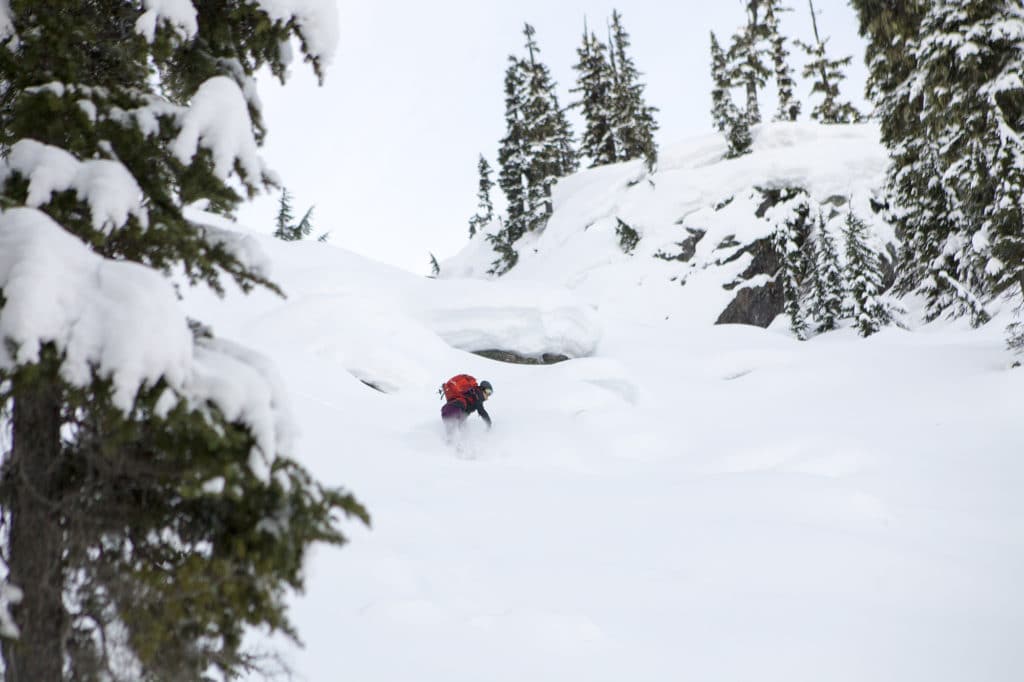
Backcountry terrain unlocks new zones like this one at Journeyman Lodge in the Callaghan – having the right gear to enjoy the backcountry and be safe is key. Photo by Abby Cooper
New this season is the G3 Splitboard+ Glide climbing skins. 70% mohair for optimal glide and 30% nylon for added durability. Less popular on the North American market are the Pomaco skins for skiers. If you are a die-hard fan of the ultimate glide, they make a model with 100% mohair.
Ski poles seem like silly sticks to have a strong product preference, but if you would like a collapsible pair for your split or a super light-weight pair for your next ski adventure, check out these two options: Black Diamond makes the Expedition 3 ski poles and the Fixed length carbon ski.
Ski crampons are a must essential for any springtime ski tour and if forgotten, they will break a big traverse on the first day. Used for travel on icy slopes, your binding will determine which model you will select and size depends on the width of your ski.
For even more on ski gear check out our Ski Gear Essentials blog by Joe Schwartz for both inbounds and backcountry gear recommendations. From gloves and goggles to ski boots and jackets Joe’s recommendations are primed for the season ahead!
Avalanche Safety
Before the snow begins to fall, read up on the basics via an online avalanche course and practice transceiver searches with your friends in the field or forest. Listen to the Avalanche Hour podcast while commuting to work. Once the snow is flying and the ski season is in full swing, sign up for an avalanche course – AST1 or AST2 – dependant on your current level of training. If you can’t afford a course to teach you how to safely travel in the mountains and use the gear to save your friend’s life in an avalanche, then you shouldn’t afford to leave the ski area boundary. Once home, free from the backcountry make sure to share the travel and snow conditions you experienced so other skiers and riders can learn from you. Let’s all have a safe winter in the mountains! Four essentials for avalanche safety, which you should never level the parking lot without, are a transceiver, shovel, probe, and partner. Check out Mammut’s new Barryvox S transceiver, it is powerful, easy and fast with a digital search strip of 70 meters.
Navigation
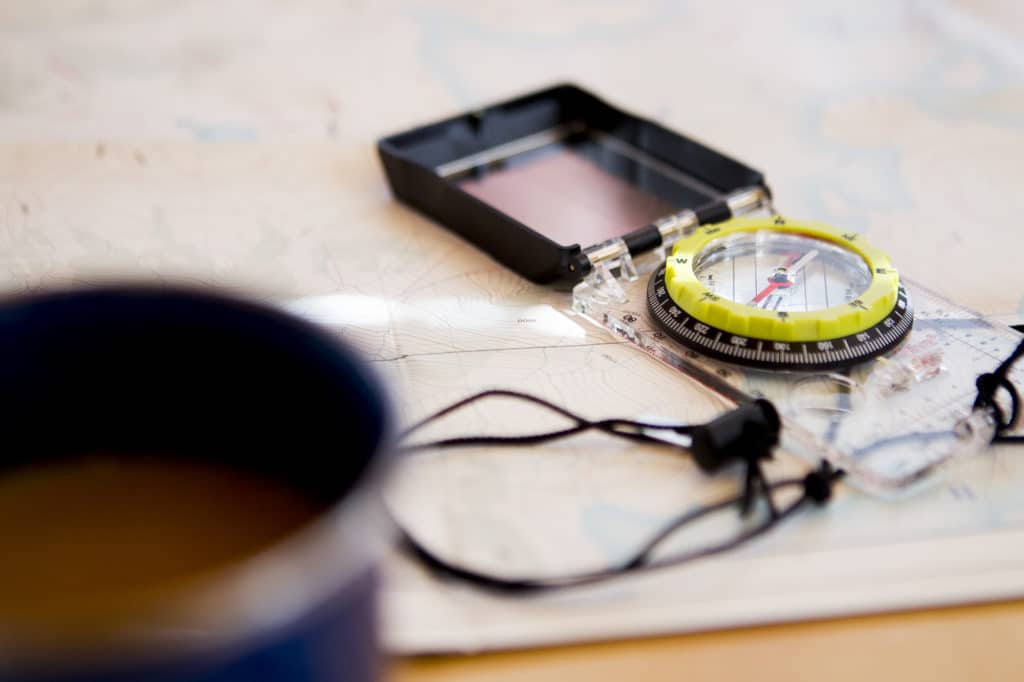
From cell phones to GPS to paper maps, knowing where you are in the backcountry is not optional. Photo Abby Cooper.
For speedy navigation and tracking device, consider downloading the Gaia GPS app to your Smartphone – you can pre-download the geographical area you are planning to visit and you can work off of Airplane mode to save your battery life.
Remember not to become too dependent on technology and to pack a map and the Suunto MC2 compass – they are foolproof and the most reliable since batteries fail. Valhalla Pure Outfitters in Squamish can even print custom maps from the National Topographic System down to 1:20,000 scale.
A watch such as the Suunto Core has a built-in altimeter, barometer, and compass, plus even tells the time.
Emergency/Rescue Equipment
A communication device beyond your cell phone is necessary because chances are you will venture out of range. Check out the new inReach Mini. It’s a lightweight (3.5oz), compact satellite communicator that enables two-way texting when paired with your Smartphone.
A First Aid Kit that is inspected every season and well stocked after each use.
The RAB Siltarp 1, is made from ripstop parachute nylon and is super light-weight at 215g – fitting into the corner of anyone’s backpack. A tarp is essential for every group heading into the backcountry and can be used to build a snow trench emergency shelter by adding a few ski poles and cord to the equation.
Pack an extra warm layer in the bottom of your pack in case of a change in weather or an overnight bivy. Consider the Arc’teryx AR Atom Hoody (with Coreloft insulation) if still traveling late to make it back to the village for last call or the Mammut Broad Peak Pro, a water-repellent down jacket, if spending the night out unexpectedly.

I spy a bunch of Arc’teryx Atom’s – a true favourite of backcountry users. Photo by Abby Cooper
Ski straps in extra-long length can be used to repair broken ski boots, splint a broken leg with ski poles, etc. At a minimal weight, several extras should be packed along with your Repair Kit to fix skis/snowboard, bindings and skins.
A rechargeable headlamp such as Petzl Actik Core (plus pack spare batteries that can be used for your transceiver as well).
Pure Necessities
And of course, never forget these essentials that are on every survival list: water and snacks. A wide-mouth Nalgene bottle is my all-time favorite, as well as a thermos with warm tea if ski touring in cold conditions. Depending on the distance that you’re choosing to travel in the backcountry, consider the weight of water vs. stove/fuel. It can be lighter to bring fuel (100g) and a small Jetboil (340g) that boils water in 2.5 minutes and can produce around 10 Litres.
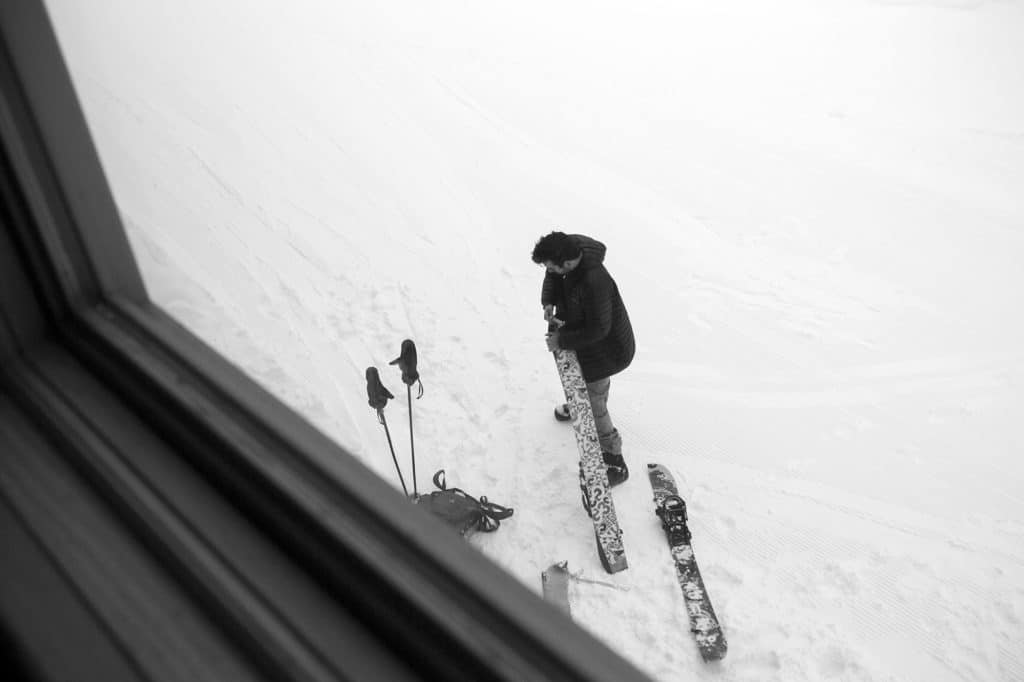
Skin up rituals. Photo by Abby Cooper
So there you have it, a helpful touring gear list to keep on your fridge as you prepare for your next backcountry adventure. See you out in the backcountry.

